Why Phoenix Businesses Need Reliable Managed IT Services Owning or running a business in a competitive market like Phoenix requires more than just keeping the lights on—you’ll also need strategic technology management that aligns with your growth expectations.
3 Reasons to Find a Managed IT Services Provider in Phoenix
The Strategic Advantage: Why Companies Are Embracing Managed IT Services in San Diego

In today's digital economy, businesses in San Diego are increasingly looking for managed IT services that will ensure stability, security, and scalability. As this shift occurs and the business landscape becomes increasingly technology-dependent, organizations are reconsidering traditional reactive approaches to IT management.
The Role of Leadership in Cyber Awareness: How Business Leaders Can Set the Tone
Cybersecurity Starts With Your Team: Uncovering Threats and the Benefits of Training
Risk Assessments: Your Business’s Pitstop for Growth and Security
Common Risk Assessment Myths That Every Business Owner Needs to Know

Despite believing they were immune, a small law firm in Maryland fell victim to a ransomware attack. Similarly, an accounting firm in the Midwest lost all access to its client information, financial records and tax files. They assumed that antivirus software was all the security they needed to thwart a cyberattack.









